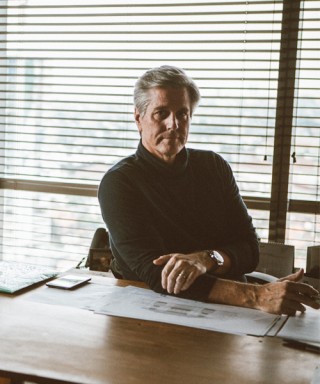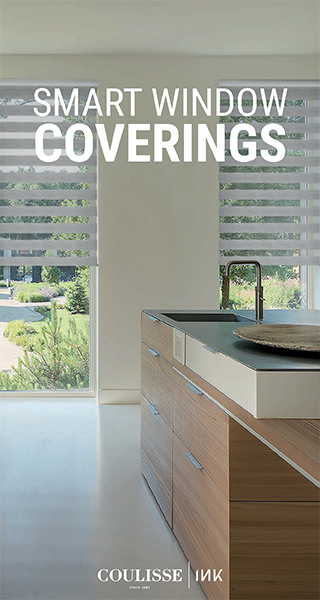
“HELLO, ROBOT. DESIGN BETWEEN HUMAN AND MACHINE”
Published by Sugar & Cream, Wednesday 14 September 2022
Images courtesy of Vitra Design Museum
Vitra Design Museum, MAK: 24 Sept 2022 to 5 March 2023
Science fiction becomes reality: robotics has taken on a growing role in our lives for a number of years now. Examples range from transport drones and disability robots to internet bots. First presented in 2017, »Hello, Robot. Design between Human and Machine« has been the Vitra Design Museum’s most successful exhibition ever and will now return to Weil am Rhein at the end of its world tour. As the robotics boom continues unabated, this presentation will be supplemented by important new developments in robotics and digitalisation of the past few years.
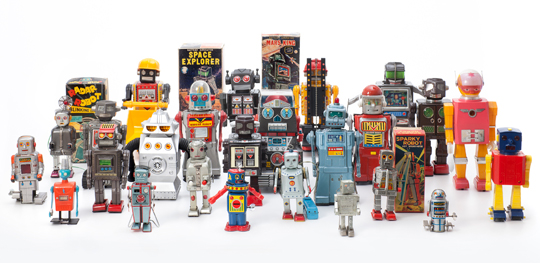
Historic toy robots, 1956 – 1980
Private collection, photo: Andreas
Sütterlin
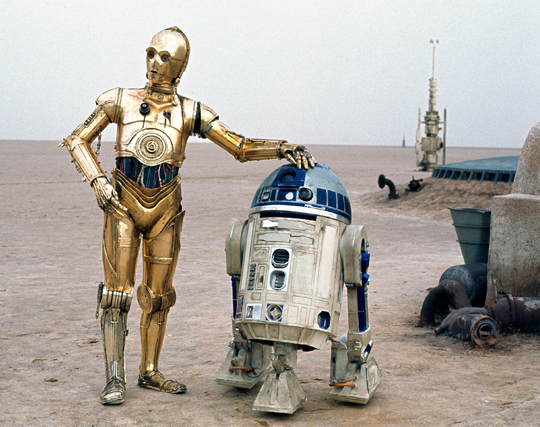
Twentieth Century Fox and Lucasfilm Ltd.
R2-D2, 1977. First screened in the movie Star
Wars. Episode IV – A New Hope (1977).
© TM 2017 Lucasfilm Ltd. All rights reserved.
This image cannot be cropped.
More than 200 exhibits from industry and the home, as well as computer games, media installations and examples from film and literature, such as the famous R2-D2 robot from Star Wars. They all illustrate how much our lives are already permeated by robots, even in the most intimate domains. At the same time, the last few years have shown the extent to which our political discourse – such as in public elections or debates about diversity or climate change – can be shaped by algorithms and artificial intelligence, and the risks we are incurring as a result. The exhibition broadens our view of the ethical, social and political questions that arise as our environment becomes increasingly robotic.
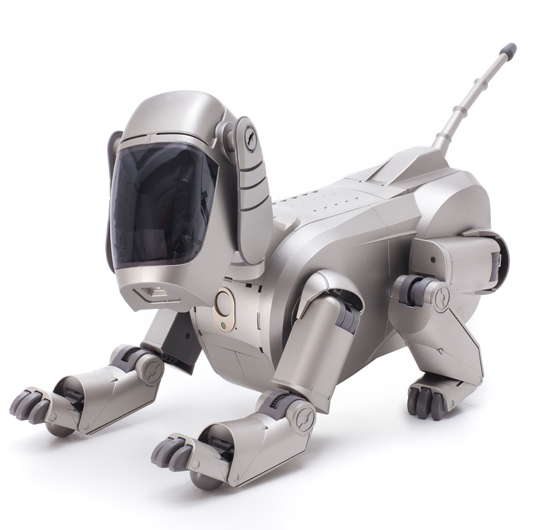
Hajime Sorayama, Sony Corporation,
»AIBO Entertainment Robot (ERS-110)«, 1999
Private collection; photo: Andreas Sütterlin
The robots are here. What once sounded like science fiction or a conspiracy theory has long become a banal feature of our everyday lives. Cars, washing machines, ATMs, drones, driverless trains between airport terminals, digital assistants that address customer concerns – all this and much more is at least partly automated today. For the definition of a robot is simpler than one would think: a device that collects data; software that interprets this data; and finally a device that generates an ensuing reaction. The output can be a point of light on the screen, but also heat, sound or movement. Self-learning algorithms – so-called bots – count as robots, as do communicative everyday objects – the Internet of Things. In simplified terms, everything that is »smart« is considered a robot. And this no longer applies only to individual objects, but ultimately to our entire environment, which is becoming even more self-learning and autonomous every day.

Shawn Maximo, »Going Green«, Vinylprint,
2016
© Shawn Maximo
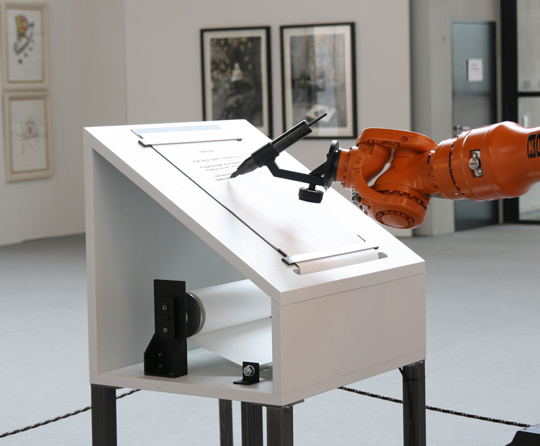
robotlab (ZKM), »manifest«, 2008
© robotlab
Design is at the interface between humans and this robotic environment. This goes far beyond the mere design of form and function. Instead, »Hello, Robot.« looks at how design shapes the interaction and relationship between people and machines, but also between individuals – for better or for worse. In the process, we have to ask ourselves a number of questions, beginning first and foremost with: how do we – as individuals and as a society – want to deal with new technologies?

Presented by Melandas Indonesia
Visitors encounter 14 questions on their way around the exhibition, which address the topic of robots in four stages. They all deal with various aspects of the controversial debate surrounding robots and seem only at first glance to be easily answered with a yes or no.
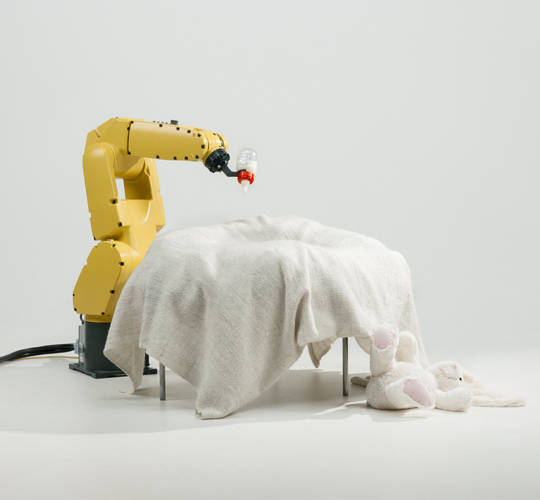
Stephan Bogner, Philipp Schmitt and
Jonas Voigt, »Raising Robotic Natives«,
2016
© Jonas Voigt
The first part of the exhibition looks at the old modernist enthusiasm for artificial humans and how popular culture has shaped our understanding of robots. Here we meet not only legendary robots from film and literature, such as R2-D2, the lovable astromech droid from Star Wars, but also the very real, four-legged Boston Dynamics robot Spot. The robot dog assists in missile tests and in excavation sites at Pompeii, he more recently gained questionable fame in a video showing him in a deserted Shanghai. A megaphone is taped to his back, urging people to comply with strict Covid measures.
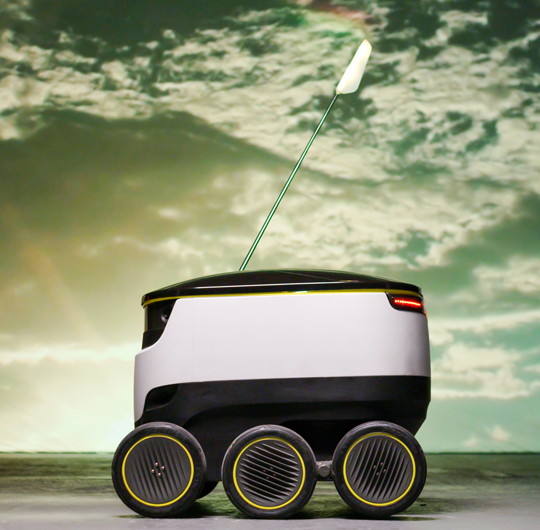
Starship Technologies, »Starship Delivery«,
2015
© Starship Technologies
The second section of the exhibition is dedicated to the field in which robotics experienced its breakthrough: industry and the world of work. While robots are repeatedly portrayed as a threat to workers today, »Hello, Robot.« illuminates the current debate on this topic from very different perspectives. The spectrum of exhibits ranges from the classic industrial robot to an installation by the group RobotLab, in which a robot produces manifestos on a continuous basis and thus questions the boundaries between human creativity and the automation of work. One example is the Motorola Symbol (2009), a so-called wearable terminal which is already being used in large logistics centres. The aim is to make work processes more efficient: Orders appear directly on the screen and the scanner worn on the finger registers its completion. Through this fusion of man and machine, workforce performance is monitored live. This controversial development is the subject of heated discussions and repeatedly makes negative headlines.
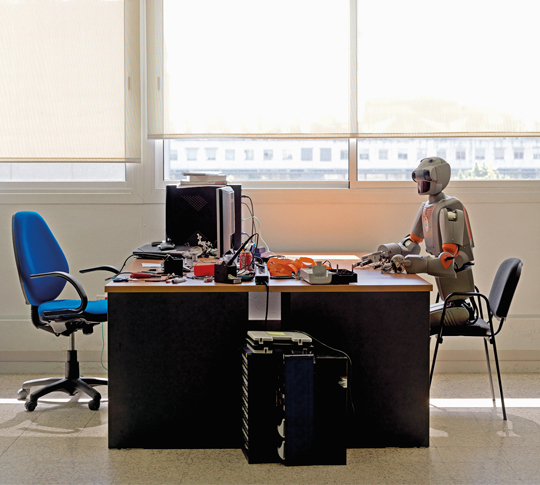
Vincent Fournier, »Reem B #5 [Pal], Barcelona,
Spain«, from: »The Man Machine«, 2010
© Vincent Fournier
The third part of the exhibition shows how we are developing a closer personal relationship to new technology – as a »friend and helper« in everyday life, for household chores, in care facilities, as a digital companion or even for cybersex. It is particularly exciting to observe how not only the relationship between man and machine is changing, but also interaction between people. One example shown in the exhibition is a tapestry by French artist Éva Ostrowska. Her work is a humorous and subversive take on how women can protect their privacy in the age of dating apps.
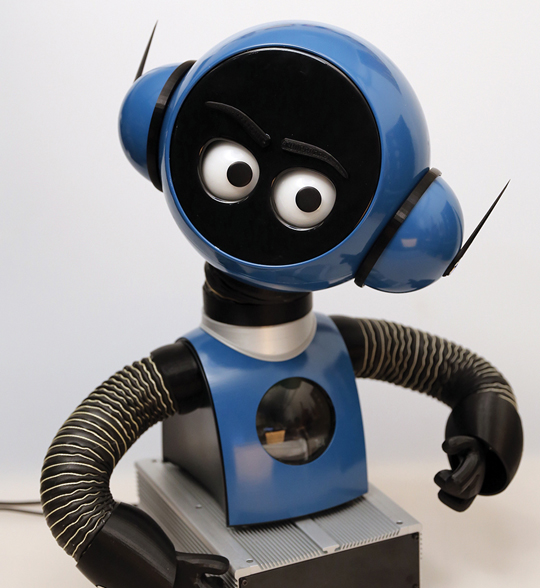
Jan De Coster, »Robin«, 2015
© Jan De Coster
The impact of technology – specifically: social media – on human relationships is also the theme of »The Intersection«, a video work by British design studio Superflux. The film is set in the near future and shows what we are already seeing in rudimentary form today: the disintegration of the social fabric in our society. The Intersection, after which the film is named, is a social movement that brings people back together. Not in spite of their differences, but because of them. They talk to each other, care for each other and, in doing so, make use of technology in a way that serves people instead of just the data market – as is the case today.

ABB Ltd., »YuMi®, dual-arm industrial
robot«, 2015
© ABB Ltd.
The fourth and final part focuses on the increasing fusion of man and robotics, for example when we live in a »learning« building, move around in a so-called »smart city«. Technology shapes us, and we in turn shape our technological, robotic environment. For his video installation »Google Maps Hacks«, Berlin media artist Simon Weckert created an artificial traffic jam in Google Maps by taking a handcart full of smartphones to several empty streets. The online map service registers increased traffic and accidents through crowdsourcing: location information from all the Google users on site is processed immediately and any congested streets, alleys and squares are marked orange or red on the map. In this way, Weckert makes clear that we already live in an automated world.
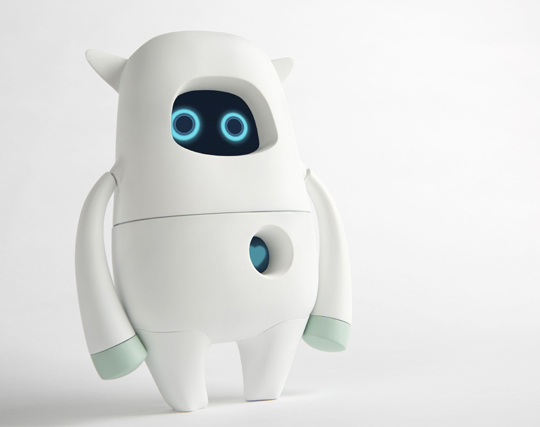
Gina Leon and Zos Lee for AKA, »Mu-sio K«
© AKA, LLC
The »Eggshell Pavilion« by Gramazio Kohler Research, ETH Zurich, will be on display outside the museum to complement the exhibition. The research laboratory examines the development and effects of digital production methods on architecture, and the pavilion in front of the Vitra Design Museum uses so-called eggshell production technology. The shell for the concrete casting comes from the 3D printer and is peeled off like an eggshell after hardening. This not only allows unusual shapes, but also achieves material savings of up to 50 percent.
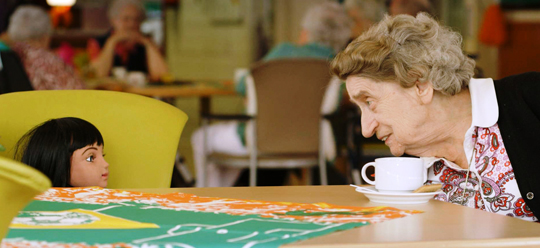
Sander Burger, »Alice Cares«, 2015
Filmstill
© KeyDocs/Alice Cares
The exhibition shows the ambivalence with which the spread of robotics has been viewed for many decades. Right from the start, the debate about artificial intelligence has oscillated between utopian and dystopian visions, between the hope of a better, technologically advanced world and the fear of disempowerment. In this context, we are once again confronted with the question of the designer’s responsibility.
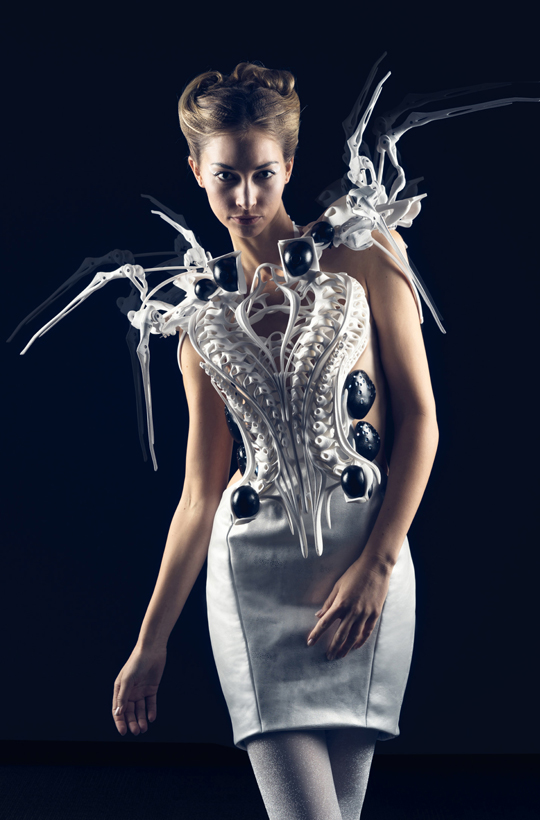
Anouk Wipprecht, »Spider Dress 2.0«, 2015
3D printed with Intel Edison Microcontrollern
© Anouk Wipprecht, photo: Jason Perry
The 14 questions asked by the exhibition
1.Have you ever met a Robot?
2. What was your first experience with a Robot?
3. Do we really need Robots?
4. Are Robots our friends or enemies?
5. Do you trust Robots?
6. Could a Robot do your job?
7. Do you want to become a producer yourself?
8. How much do you want to rely on »smart« helpers?
9. How do you feel about objects having feelings?
10. Do you believe in the death and rebirth of things?
11. Do you want a Robot to take care of you?
12. Do you want to live inside a Robot?
13. Do you want to become better than nature intended?
14. Are Robots advancing evolution?
An updated new edition of the publication »Hello, Robot. Design between Humans and Machine« is being released in conjunction with the exhibition. Prefaced with a detailed introduction, it includes a number of new projects and examines the important developments of recent years. In addition, the book includes numerous object descriptions, essays and interviews with Bruce Sterling, Fiona Raby, Anthony Dunne, Gesche Joost, Carlo Ratti and others.
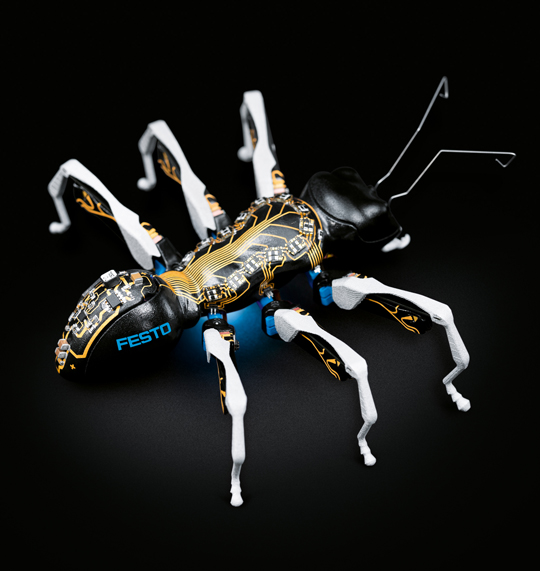
Festo, »BionicANTs«, 2015
© 2017 Festo
AG & Co. KG
2nd, revised and extended edition, 2022, softcover embossed, 19 x 25 cm, 336 pages, approx. 260 images, ISBN 978-3-945852-50-7 (English), € 49.90
 2.30K
18/07/2025
2.30K
18/07/2025
SCULPTED BY NATURE: ALEXANDER LAMONT’S XXV COLLECTION
Alexander Lamont’s XXV Collection is a masterful tribute to nature and craftsmanship, where sculptural forms and exquiste materials converge in...
read more 527
18/07/2025
527
18/07/2025
CRÜ CORNER BISTRO AT KEMANG JAKARTA
A restaurant that embodies the idea of a bistro with a European flair, CRÜ Corner Bistro is a new culinary destination for foodies and provides a cozy...
read more 42.74K
11/07/2025
42.74K
11/07/2025
PELUNCURAN PERDANA LEGANO HOME MENGGANDENG AGAM RIADI DI ST REGIS RESIDENCE JAKARTA
Peluncuran perdana LEGANO HOME menggandeng Agam Riadi di St. Regis Residence Jakarta: menyatukan kemewahan dan jiwa dalam sebuah ruang.
read more 16.04K
04/07/2025
16.04K
04/07/2025
URBANJOBS UNVEILS INTERIORS FOR THE SCALLA RESTAURANT
SCALLA, a posh restaurant with a Mediterranean flair located in Istanbul's famed Beykoz neighborhood, has its interiors unveiled by URBANJOBS.
read more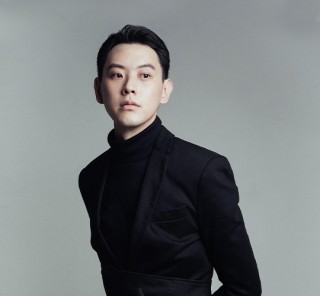 75.36K
10/01/2025
75.36K
10/01/2025
W RESIDENCE IN SOUTH JAKARTA BY MICHAEL CHANDRA
Michael Chandra, founder of MNCO Studio Design has created the W Residence with an aesthetically pleasing, practical, and pleasant home from all...
read more 42.74K
11/07/2025
42.74K
11/07/2025
PELUNCURAN PERDANA LEGANO HOME MENGGANDENG AGAM RIADI DI ST REGIS RESIDENCE JAKARTA
Peluncuran perdana LEGANO HOME menggandeng Agam Riadi di St. Regis Residence Jakarta: menyatukan kemewahan dan jiwa dalam sebuah ruang.
read more




